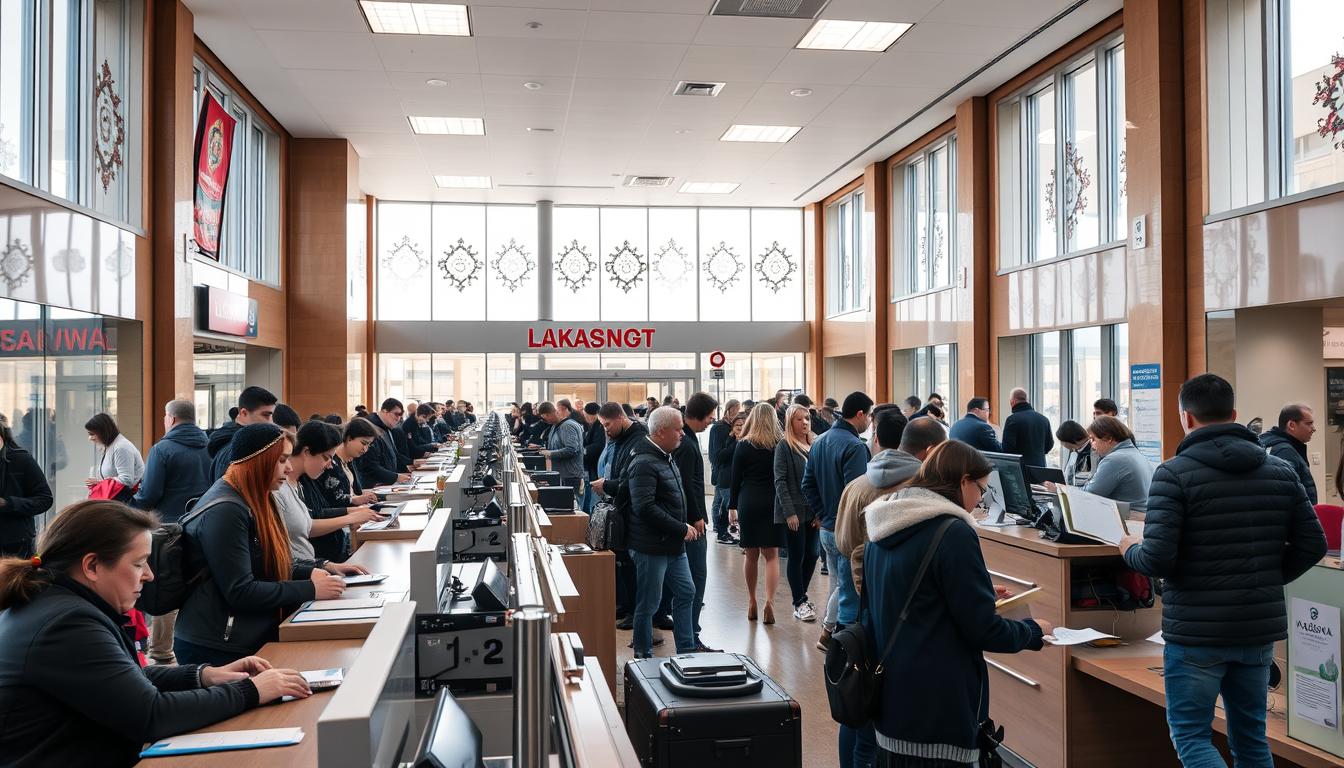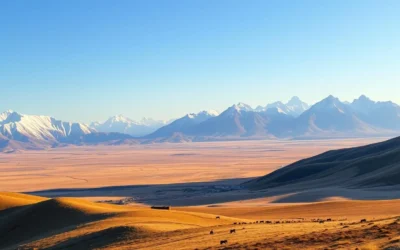✓ Accommodations ✓ Flights ✓ Rental Cars ✓ Tours & Activities
Did you know Kazakhstan is the world’s largest landlocked country? Spanning over 2.7 million square kilometers, it’s a destination filled with stunning landscapes and vibrant culture. But before you pack your bags, understanding the local currency and payment options is key to a hassle-free trip.
The official currency is the Kazakhstani Tenge (KZT), and knowing how to manage it can make your journey smoother. Whether you’re using cash or a card, being prepared ensures you won’t face unexpected challenges. From bustling cities to remote areas, having the right payment methods is essential.
This guide is your go-to resource for everything you need to know about exchange rates, travel-friendly cards, and practical tips. Whether you’re exploring Almaty’s markets or hiking in the Tian Shan Mountains, we’ve got you covered. Dive in to make your travel experience seamless and stress-free!
Introduction: Setting the Stage for Your Kazakhstan Trip
Exploring a new place requires careful preparation, especially when it comes to finances. This destination offers a mix of vibrant cities and breathtaking landscapes, making it a must-visit for any adventurous traveler. To make the most of your trip, it’s essential to plan ahead and understand the local payment options.
Carrying the right card and some cash ensures you’re ready for any situation. Whether you’re shopping in bustling markets or dining in cozy restaurants, having multiple payment methods saves time and hassle. Understanding exchange rates before you arrive is also a smart idea to avoid surprises.
In this article, you’ll learn how to manage your money effectively while traveling. From choosing the best card to handling cash, we’ll cover everything you need for a smooth and enjoyable experience. Let’s dive in and get you prepared for your next adventure!
Understanding the Kazakhstani Tenge
The official currency of Kazakhstan, the Tenge, has a fascinating story behind it. Introduced in 1993, it replaced the Soviet Ruble and became a symbol of the country’s independence. Today, the Kazakhstani Tenge (KZT) is managed by the National Bank of Kazakhstan, ensuring its stability and value.
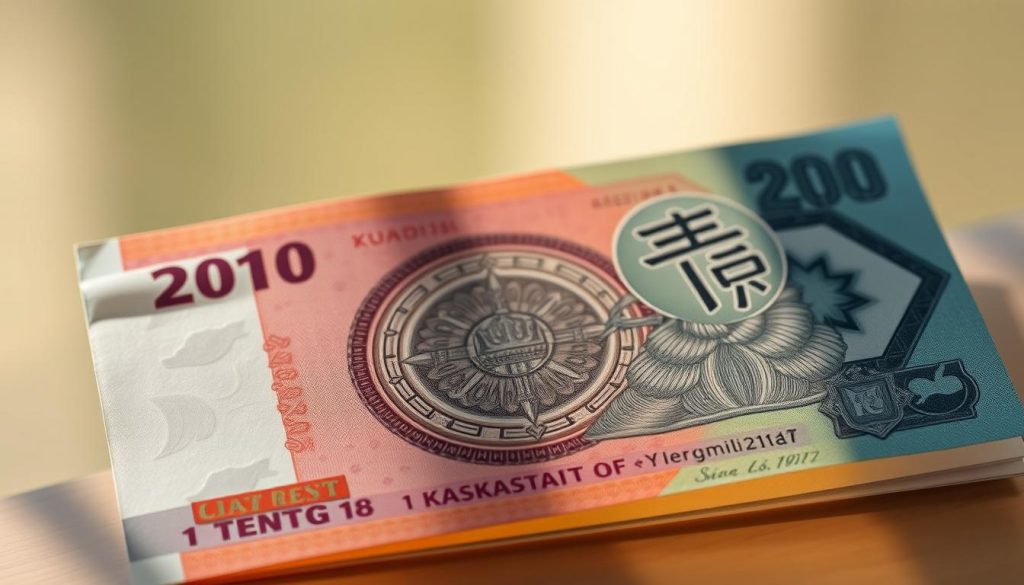
The Tenge comes in both coins and banknotes, with denominations ranging from ₸1 to ₸20,000. Smaller coins are ideal for everyday purchases, while larger banknotes are perfect for bigger transactions. The currency’s symbol, ₸, is a unique representation of its identity.
History, Denominations, and Symbols
The Tenge’s history is deeply tied to Kazakhstan’s journey as a nation. After gaining independence, the country needed a currency that reflected its sovereignty. The Tenge was designed with intricate patterns and national symbols, showcasing the country’s culture and heritage.
Here’s a quick look at the common denominations:
| Type | Denominations |
|---|---|
| Coins | ₸1, ₸2, ₸5, ₸10, ₸20, ₸50, ₸100 |
| Banknotes | ₸200, ₸500, ₸1,000, ₸2,000, ₸5,000, ₸10,000, ₸20,000 |
Role of the National Bank of Kazakhstan
The National Bank plays a crucial role in managing the Tenge. It regulates the exchange rate, issues new banknotes, and ensures the currency’s stability. For travelers, this means you can trust the Tenge’s value during your trip.
Understanding the Tenge is essential for managing your money effectively. Whether you’re using cash or a card, knowing the local currency ensures a hassle-free experience. From small purchases to major expenses, the Tenge is your key to exploring this beautiful country.
When to Exchange USD to KZT
Timing your currency exchange can make a big difference in your travel budget. Whether you exchange your money in advance or upon arrival, each option has its pros and cons. Understanding these can help you save money and avoid unnecessary fees.
Comparing Pre-Trip and On-Arrival Options
Exchanging USD to KZT before your trip often secures a better rate. Many currency exchange services offer mid-market rates, which are more favorable than those at airports or local banks. This can save you from paying high foreign transaction fees or inflated rates at the last minute.
On the other hand, exchanging upon arrival can be convenient, especially if you’re unsure how much cash you’ll need. However, airport exchange counters and local banks often charge higher fees or offer less competitive rates. This can add up quickly, especially for larger transactions.
Here’s a quick comparison:
- Pre-Trip Exchange: Better rates, lower fees, and peace of mind knowing you’re prepared.
- On-Arrival Exchange: Convenient but often comes with higher fees and less favorable rates.
Why Locking in a Mid-Market Rate Matters
Locking in a mid-market rate in advance ensures you get the best value for your money. This rate is the midpoint between the buy and sell prices of a currency, making it the fairest option. By planning ahead, you avoid the risk of fluctuating rates or unexpected fees.
For example, if you’re traveling during a busy season or to remote areas, having KZT on hand can save you time and hassle. It’s also a good idea to carry a travel-friendly card for backup, as some places may not accept cash.
Actionable Tips for Travelers
Here are some practical tips to help you decide when to exchange your currency:
- Research exchange rates and fees before your trip.
- Use a multi-currency card to avoid dynamic currency conversion fees.
- Carry a mix of cash and cards for flexibility.
- Exchange a small amount in advance for immediate expenses upon arrival.
By planning ahead and understanding your options, you can make the most of your travel budget. Whether you choose to exchange in advance or upon arrival, being prepared ensures a smoother and more enjoyable experience.
Popular Payment Methods in Kazakhstan
Navigating payment options in a new country can be a breeze with the right preparation. In major cities, debit cards and credit cards are widely accepted, making transactions quick and easy. However, cash remains essential in smaller towns and for tipping, so it’s wise to carry both.
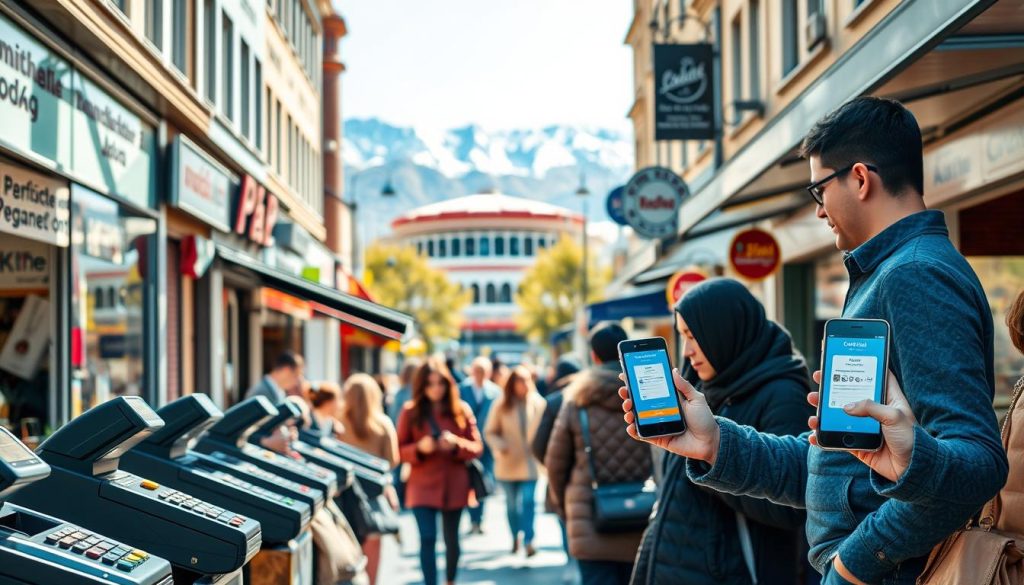
Using a travel card can simplify your experience. Providers like Wise offer competitive rates and low fees, allowing you to manage your money efficiently. These cards are especially useful for tourists who want to avoid high foreign transaction fees.
ATMs are another convenient option for accessing local cash. They are plentiful in urban areas, but less common in rural regions. Always check for fees and withdrawal limits to avoid surprises.
Here’s a quick comparison of popular payment methods:
| Method | Pros | Cons |
|---|---|---|
| Debit Card | Widely accepted, low fees | May have withdrawal limits |
| Credit Card | Convenient for larger purchases | Higher fees for cash advances |
| Travel Card | Competitive rates, multi-currency support | Monthly withdrawal limits |
| Cash | Essential for rural areas and tipping | Risk of loss or theft |
In cities like Almaty, you’ll find that most hotels, restaurants, and shops accept cards. However, in remote areas, cash is often the only option. Having a mix of payment methods ensures you’re prepared for any situation.
For example, a tourist staying in a hotel in the city might rely on their card for most transactions. But when venturing into the countryside, carrying cash becomes crucial. ATMs are your best bet for withdrawing local currency, but plan ahead to avoid unnecessary fees.
By understanding these payment methods, you can enjoy a hassle-free trip. Whether you’re using a card or cash, being prepared ensures you’re ready for anything.
How to Use Travel Cards in Kazakhstan
Travel cards are a game-changer for managing money abroad. They offer convenience, security, and often better rates than traditional bank cards. Whether you’re exploring cities or rural areas, a travel card ensures you’re prepared for any transaction.
These cards are designed for international use, allowing you to hold multiple currencies and avoid high foreign transaction fees. With options like the Wise Multi-Currency Card, you can enjoy transparent conversion rates and low costs. Let’s dive into how they work and why they’re a smart choice for your trip.
Wise Multi-Currency Card Overview
The Wise Multi-Currency Card is a top choice for travelers. It supports over 40 currencies and uses the mid-market rate for conversions. This means you get the fairest exchange rate without hidden fees.
With this card, you can spend in KZT without additional costs. It’s also easy to manage through the Wise app, where you can track expenses and convert currencies on the go. Plus, the card offers free ATM withdrawals up to a certain limit, making it a budget-friendly option.
Other Travel Card Options
If Wise isn’t your preferred card provider, there are other excellent options. Monzo, for example, offers no foreign transaction fees and no ATM withdrawal fees. Chime is another great choice, though it has a lower daily withdrawal limit.
Netspend provides flexibility but may charge higher fees depending on the card. Each provider like Wise has its unique features, so it’s worth comparing them to find the best fit for your needs.
Here’s a quick comparison of popular travel cards:
| Card | Key Features |
|---|---|
| Wise | Mid-market rate, 40+ currencies, low fees |
| Monzo | No foreign transaction fees, no ATM fees |
| Chime | No foreign transaction fees, $500 daily limit |
| Netspend | Flexible top-ups, varying fees |
Using a travel debit card can save you money and simplify your trip. Whether you choose Wise or another provider like Wise, these cards are designed to make international spending hassle-free.
Overview of Currency Denominations and Cash Management
Managing your cash effectively is crucial for a smooth travel experience. The local currency comes in a wide range of denominations, from small coins to high-value banknotes. This variety makes it easier to handle daily transactions, whether you’re buying a snack or paying for transportation.
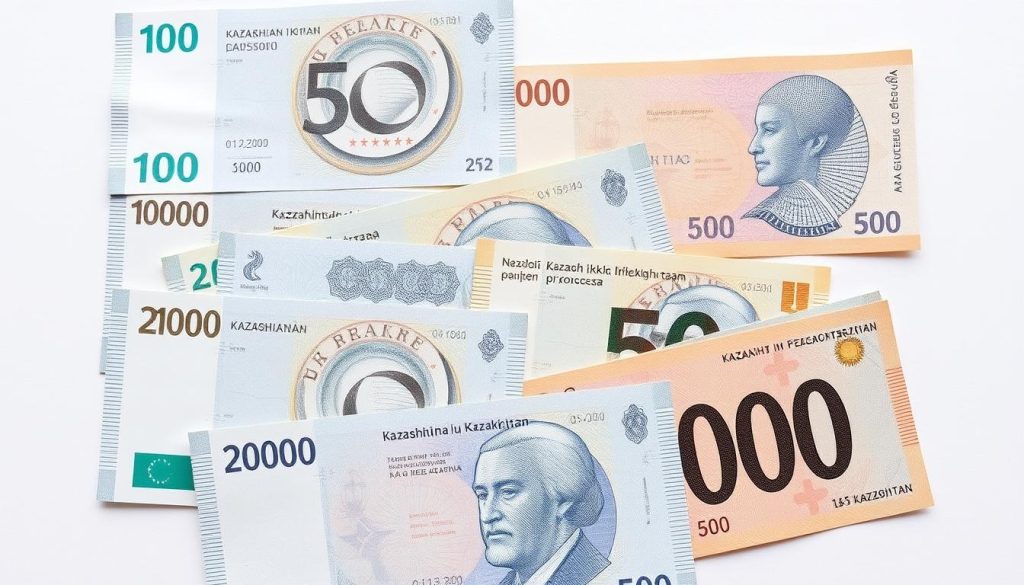
Understanding the denominations helps you plan your spending. Smaller coins like ₸5 and ₸10 are ideal for small purchases, while banknotes like ₸5,000 or ₸10,000 are better for larger expenses. Carrying a mix of both ensures you’re ready for any situation.
When handling cash, safety is key. Keep your money in a secure wallet or money belt, and avoid displaying large amounts in public. Splurge your funds between different pockets or bags to minimize risk in case of theft.
Knowing the currency exchange process is equally important. Always check the rate before exchanging money to avoid unnecessary costs. Using a reliable card for backup can also save you from carrying too much cash at once.
Digital payment methods like cards offer flexibility, especially in urban areas. However, cash remains essential in rural regions. Balancing both ensures you’re prepared for any scenario, whether you’re shopping in a bustling market or dining in a remote village.
Here are some tips to manage your money wisely:
- Carry a mix of small and large denominations for convenience.
- Use a secure wallet or money belt to protect your cash.
- Check exchange rates before converting your money.
- Balance cash and card use to minimize risk and maximize convenience.
By understanding the local currency and managing your cash wisely, you can enjoy a hassle-free trip. Whether you’re using cash or a card, being prepared ensures you’re ready for anything.
Best Ways to Obtain KZT in Kazakhstan
Acquiring the local currency doesn’t have to be complicated if you know your options. There are several ways to get KZT, each with its own benefits. Whether you prefer cash or digital payments, understanding these methods ensures a smooth experience.
One popular option is exchanging USD to KZT upon arrival. This is convenient, especially if you’re unsure how much cash you’ll need. However, airport exchange counters often charge higher fees. To avoid this, consider exchanging a small amount in advance for immediate expenses.
Using ATMs is another great way to obtain local currency. They are widely available in cities and offer competitive rates. Just check for withdrawal limits and fees to avoid surprises. Carrying a mix of cash and a card is a smart idea for flexibility.
Pre-loading a travel card is a secure option. Cards like Wise allow you to convert currencies at mid-market rates, saving you from unfavorable exchange rates. This is especially useful for frequent travelers or those planning to stay longer.
Here are some actionable tips for choosing the best method:
- Exchange a small amount of cash in advance for immediate needs.
- Use ATMs in urban areas for better rates and lower fees.
- Pre-load a travel card for secure and convenient transactions.
- Avoid airport and in-store kiosks for exchange due to higher fees.
By understanding these ways to obtain KZT, you can manage your money effectively. Whether you choose cash, ATMs, or a travel card, being prepared ensures a hassle-free trip.
Tips for Avoiding Unnecessary Fees and Charges
Saving money while traveling starts with avoiding unnecessary fees. Extra charges can quickly add up, but with a few smart strategies, you can keep your budget intact. From foreign transaction fees to dynamic currency conversion, understanding these costs ensures a smoother trip.
One common fee to watch out for is dynamic currency conversion (DCC). This occurs when a store or ATM offers to convert your payment into your home currency. While it may seem convenient, the exchange rate is often marked up, leading to higher costs. Always opt to pay in the local currency to avoid this.
When using your card, choose one with no foreign transaction fees. Many travel-friendly cards, like Wise, offer competitive rates and low costs. These cards are designed for international use, making them a great option for frequent travelers.
Here are some actionable tips to minimize extra charges:
- Use ATMs that are part of global networks to avoid high withdrawal fees.
- Check your bank’s policies on international transactions before your trip.
- Carry a mix of cash and cards to reduce reliance on costly services.
- Read the fine print to understand all potential fees.
Another tip is to compare service providers worldwide. Some banks and card issuers offer better rates and lower fees than others. Researching your options can save you a significant amount over time.
Here’s a quick comparison of common fees and how to avoid them:
| Fee Type | How to Avoid |
|---|---|
| Foreign Transaction Fee | Use a no-fee travel card or bank account. |
| Dynamic Currency Conversion | Always pay in the local currency. |
| ATM Withdrawal Fee | Use ATMs within global networks or those with low fees. |
| Service Charges | Compare providers and choose those with transparent pricing. |
By following these tips, you can avoid unnecessary fees and keep your travel budget on track. Whether you’re using cash or a card, being prepared ensures a hassle-free experience.
Navigating Currency Exchange Rates and Markups
Understanding currency exchange rates can save you money and stress during your travels. The exchange rate determines how much of one currency you get for another. Knowing how it works helps you make smarter financial decisions abroad.
The mid-market rate is the baseline rate used by banks and major currency services. It’s the fairest rate available, but consumers often face markups when exchanging money. These markups can significantly increase your overall cost.
How Markups and Fees Affect You
Financial institutions often add a markup to the mid-market rate. This means you pay more than the actual exchange rate. Additionally, transaction fees can further inflate your expenses. For example, exchanging money at airports or tourist kiosks often comes with higher fees.
Providers like Wise offer conversions at the mid-market rate, saving you from these markups. Using a travel-friendly card can also help you avoid unnecessary fees and get better value for your money.
Tips for Tracking Live Exchange Rates
Tracking live exchange rates ensures you get the best deal. Use reliable apps or websites to monitor fluctuations. This helps you decide the best time to convert your money.
Here are some actionable tips:
- Compare rates from multiple providers before exchanging money.
- Use a card that offers mid-market rates, like Wise.
- Avoid dynamic currency conversion, which often comes with hidden markups.
- Plan ahead to lock in favorable rates before your trip.
By understanding these details, you can control your travel expenses and make the most of your budget. Whether you’re using cash or a card, being informed ensures a smoother experience.
Kazakhstan: Ultimate Travelers Guide to Currencies & Payments
Planning your finances is a crucial step for any successful adventure. This guide has walked you through the essentials of managing money during your trip. From understanding the local currency to choosing the right payment methods, being prepared ensures a smooth and enjoyable experience.
One of the key takeaways is the importance of carrying a reliable card. Whether it’s a multi-currency card or a no-fee debit option, having a secure payment method saves you from unnecessary stress. Additionally, exchanging a small amount of cash in advance can be a lifesaver for immediate expenses upon arrival.

Flexibility is another critical factor. While cards are widely accepted in cities, cash remains essential in rural areas. Balancing both ensures you’re ready for any situation. As you explore this beautiful destination, remember that a little preparation goes a long way in enhancing your travel experience.
Here’s a quick recap of the main points:
- Understand the local currency and its denominations.
- Choose a travel-friendly card to avoid high fees.
- Exchange money in advance for better rates.
- Carry a mix of cash and cards for flexibility.
By following these tips, you can focus on enjoying your trip without worrying about financial hiccups. Stay tuned for the final advice in the conclusion, where we’ll tie everything together for a seamless journey.
Managing Money on the Go with ATMs and Local Options
Accessing your money efficiently while traveling is essential for a stress-free experience. ATMs are widely available in urban centers, offering a practical way to withdraw local cash. However, being aware of potential fees and safety measures can save you both time and money.
ATM Withdrawal Tips and Best Practices
Using ATMs abroad can be simple if you follow a few key steps. First, choose ATMs located in well-lit, secure areas, such as inside banks or shopping centers. This reduces the risk of theft or card skimming. Always cover the keypad when entering your PIN to protect your information.
Another tip is to withdraw larger amounts less frequently. This minimizes the number of transactions and reduces fees. However, avoid carrying too much cash at once for safety reasons. Checking your bank’s daily withdrawal limit can help you plan accordingly.
Avoiding Foreign Transaction Fees
Foreign transaction fees can add up quickly, but there are ways to avoid them. Using a travel debit card or a card with no foreign transaction fees is a smart choice. Providers like Wise or Monzo offer competitive rates and low costs, making them ideal for international travelers.
Always opt to pay in the local currency when prompted. Dynamic currency conversion (DCC) often comes with hidden markups, increasing your overall price. By paying in the local currency, you ensure a fairer exchange rate.
Here are some actionable tips for using ATMs efficiently:
- Use ATMs within global networks to avoid high withdrawal fees.
- Monitor exchange rates to ensure fair pricing when withdrawing money.
- Carry a mix of cash and cards for flexibility in different locations.
- Notify your bank of your travel plans to avoid card blocks.
By following these strategies, you can manage your money effectively while traveling. Whether you’re in a bustling city or a remote area, being prepared ensures a smoother experience.
Combining Cash and Card: A Flexible Payment Strategy
Balancing cash and card payments can make your travels smoother and more flexible. Each method has its strengths, and using both ensures you’re prepared for any situation. Whether you’re making small purchases or larger transactions, this dual strategy maximizes convenience.
Carrying cash is essential for smaller purchases, tipping, or areas where cards aren’t accepted. On the other hand, using a card is ideal for larger expenses and offers added security. Combining both gives you the best of both worlds.
Using a debit card for everyday expenses and a credit card for emergencies can help minimize transaction fees. Many travel-friendly cards offer no foreign transaction fees, saving you money. Always opt to pay in the local currency to avoid dynamic currency conversion markups.
Here’s how to make the most of this strategy:
- Carry a mix of small and large denominations of cash for flexibility.
- Use a debit card for daily expenses and a credit card for backup.
- Plan your spending to avoid overspending and keep track of your budget.
- Ensure you always have access to KZT for immediate needs.
By combining cash and card, you’ll enjoy a seamless travel experience. This approach ensures you’re ready for any transaction, whether you’re in a bustling city or a remote area.
Overcoming Common Currency Challenges in Kazakhstan
Managing your finances abroad can be tricky, but with the right strategies, you can avoid common pitfalls. Travelers often face issues like unexpected fees, fluctuating exchange rates, and limited card acceptance in remote areas. Being prepared can save you both money and stress.
One of the biggest challenges is dealing with fluctuating exchange rates. These changes can impact your budget significantly. To minimize this, monitor live rates and exchange a portion of your money in advance. Using a multi-currency card can also help lock in favorable rates.
Another common issue is unexpected fees. From ATM withdrawals to foreign transaction charges, these costs can add up quickly. To avoid this, choose a card with no foreign transaction fees and use ATMs within global networks. Always opt to pay in the local currency to bypass dynamic currency conversion markups.
In remote areas, card acceptance can be limited. Carrying cash is essential for these situations. However, avoid carrying large amounts at once for safety reasons. Splitting your funds between different pockets or bags can reduce the risk of loss or theft.
Here are some actionable tips to overcome these challenges:
- Create a detailed budget to track your expenses and avoid overspending.
- Use a travel-friendly card to minimize fees and access better exchange rates.
- Carry a mix of cash and cards for flexibility in different locations.
- Notify your bank of your travel plans to prevent your card from being blocked.
By planning ahead and understanding these challenges, you can enjoy a smoother trip. Whether you’re exploring bustling cities or remote areas, being prepared ensures you’re ready for anything.
Conclusion
A well-prepared financial strategy can transform your travel experience. By understanding the local currency and using modern tools like the Wise travel card, you can manage your money efficiently and avoid unnecessary fees. This approach ensures you’re ready for any situation, whether you’re exploring bustling cities or remote areas.
Using a travel-friendly card with no foreign transaction fees is a smart choice. It allows you to lock in favorable exchange rates and minimize extra costs. Always opt to pay in the local currency to avoid markups and keep your budget on track.
Here are some final tips to enhance your journey: carry a mix of cash and cards, monitor live exchange rates, and notify your bank of your travel plans. These small steps can make a big difference in your overall experience.
Use this guide as your checklist to stay organized and confident. With careful planning and the right tools, you can focus on enjoying your adventure to this vibrant destination. A well-thought-out approach ensures a seamless and memorable trip.
The above is subject to change.
Check back often to TRAVEL.COM for the latest travel tips and deals.
